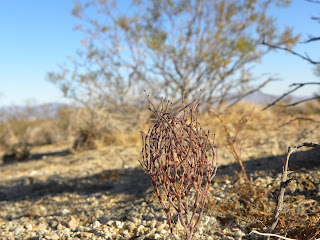CEC Assesses Massive Colorado Desert Solar Project
The California Energy Commission (CEC) recently released it's draft Staff Assessment and Environmental Impact Statement for the Blythe Solar project, an industrial-scale site that would disturb approximately 7,030 acres of Colorado Desert. The site is just west of Blythe and would sit in the middle of the Palo Verde Mesa next to the McCoy Mountains. In summary, the environmental impact statement points out that the most significant impacts of the site would be the loss of desert washes--which are important to the maintenance and sustainability of desert aquifers--and the loss of desert tortoise and Mojave Desert fringe-toed lizard habitat. The up-side is that the plant is near populated and agricultural areas, reducing its impact on uninterrupted wilderness, and would produce up to 1000MW of renewable energy once all four proposed portions of the site are online. However, the substation that would be required would decimate dozens of acres of dune habitat, on ...





